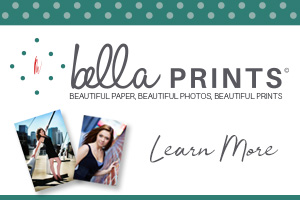
Creating and Pricing Products
By Judy Grann, Cr.Photog.,CBM, ABI, VP SuccessWare Inc.
The next business fundamental is to create product opportunities for clients and to price them profitably.
A-La-Cart Products
Start by determining the time and materials required to create each individual portrait size you sell, as if you were going to sell only one to your client.
- Begin by determining how long it takes you to process an average session to the point that the images are ready to show to your client, and establish per-minute charge for that time. Example: $30 per hour = $.50 per minute.
- Determine how long it takes to finish each of your a-la-carte products (8x10s, 11x14s, 16x20s etc.), establishing a per-minute charge for each.
- Determine all materials needed to finish each of the a-la-carte products you will sell to your client (print price, surface texture, mount board or print folder, etc.), establishing a cost for each.
- Calculate costs for any packaging materials you will use to deliver each order, including bags, bows, ribbons, stickers, tissue paper, etc.
- Add together all costs for producing each of your a-la-carte sizes.
- The next step is to determine the markup factor that is right for your business model, then use it as a multiplier to determine the price of your products: According to industry standards developed by Professional Photographers of America, the markup factor for a home studio is 2.9, which you can round up to 3. When you multiply your product time and materials by a factor of 3, this equates to a 35% Cost of Sales. The markup factor for a retail location studio is 4, which equates to a 25% Cost of Sales.
Package Prices
Packages allow you to sell multiple poses from the same session. Because you are spreading the cost of the session over the number of poses in each package, you can pass on savings to your clients. You do this by first determining the prices of a SECOND pose from the same session.
- Establish the time it takes to create a second pose in each of the print sizes you offer: Note that you do NOT include the time charges in item #1 above, as you have already covered it in the production of the first image. You will use that time charge only when you are ready to create a completed package.
- Determine what products you intend to sell in each package.
- For each package, add the time charges included in #1 of the A-La-Cart Section listed above, then add the various SECOND print price costs from #1 of this section.
- Multiply the total costs of each package by the markup factor for your business model.
Pricing Tip: If you have never priced products before, start by collecting all the materials that go into the makeup of a product and lay them out on a table. Use sticky notes for each element of time that must be priced.
Pricing is a time-consuming process, but it is an absolutely essential element for running a profitable business. Once you have established profitable prices, based on industry standards for your business model, you will have taken a huge step along the road to business success.
The following resources are available if you are interested in learning more on pricing.
You can automate product pricing by using SuccessWare’s Pricing Tool. To learn more visit SuccessWare at http://www.successware.net/index2.html.
Learn more about pricing from Ann Monteith at http://www.annmonteith.com/ann_monteith_faqs.html.
Pricing for Profit is taught at the following workshops:
Ann Monteith’s Guerilla Management Workshops.
Marathon’s Make Money Now Workshops
PPA’s Studio Management Services Business Basics Workshops
PPA’s Studio Management Services Business Breakthroughs Workshops
More information on PPA’s Benchmark Survey.

















People reacted to this story.
Show comments Hide commentsOriginally posted March 9, 2012
great post!!
Comments are closed.